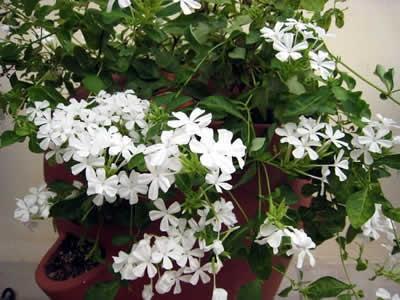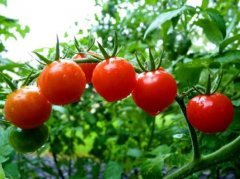How to breed potted snow flowers, when to sow snow flower seeds
White snowflake is a kind of ornamental flower, but generally few people grow this kind of plant, but it is not that this kind of plant is difficult to raise, but that few people appreciate it, do you want to plant this kind of plant? Let's take a look at it if you want.
Culture methods of potted white snowflakes:
To grow, you need peat pots, particles, plastic flats, egg boxes with holes in the bottom, or other shallow containers with well-drained water; growth media (preferably a special soilless mixture of seeds); plastic moisture covers or plastic bags; add water, fertilizer, labels, warmth and light. If you re-use plastic cans or pans, make sure they are thoroughly cleaned-disinfect them for a few minutes in the microwave-and then add a moist mixture to the top of 1 inch. Or use peat particles, which expand when wet and can be completely transplanted without interfering with fragile roots. No matter what containers you use, put them in a waterproof tray so that water can be added from the bottom so that the seeds will not be disturbed. Keep the mixture wet, but don't get wet through.
Plant seeds according to the direction of the package-usually two to three times the diameter of the seeds. Seeds that need light to germinate are hardly covered. Mark each container with plant name and variety and sowing date, then cover it with a humidity dome or place it in a plastic bag until the seeds germinate-but allow air circulation through an unsealed bag. A warm bottom (75 to 85 degrees Fahrenheit) helps seeds germinate, so put the tray on the electric pad or on the refrigerator or radiator.

Once the seeds germinate, they need light. Sunrooms or windowsills can get plenty of natural light (temperatures range from 60 to 70 degrees Fahrenheit during the day), but most gardeners need to put their seedlings under fluorescent or full-spectrum lights for 12 to 16 hours a day. Cheap "store lights" will work fine. Place the lamp directly above the seedling and adjust upward as the plant grows. When the plant has two sets of true leaves, add semi-strong liquid fertilizer, such as fish milk, to the watering plate once a week.
Some seedlings may need to be transplanted into larger pots to provide space for their roots to grow and develop. Use the same program and mix the seeds. Treat baby plants gently with their leaves rather than stems or roots, and try to keep tiny root balls intact as you move them into new pots. Poke a hole in the moist mixture with your fingers, place the seedlings in the hole, and then gently press the mixture to eliminate the cavitation. Water and fertilize as before, and provide plenty of light and mild air circulation.
The seedlings need to be hardened before transplanting the plants to the outdoor garden. This means gradually adjusting them to the outdoors for a few hours a day by placing them in the shade. Every day, increase time and light exposure. Keep them watered because small pots dry quickly outside. After a week to 10 days, plants should be ready to be transplanted into the garden-although if the temperature is particularly cool, you may still want to cover them with a newspaper at night.
- Prev

Tomato planting technology and management, how to plant tomatoes to grow better results
Tomatoes originated in the Andes in South America, which is now part of Peru, Bolivia and Ecuador. Eventually tomatoes were grown throughout Central America and Mexico, and Spanish explorers found them in the gardens of Montezuma in the 16th century.
- Next
What can rice stalks do to make egg boxes? The waste of mushroom fungus turns into good soil for growing strawberries.
How can agricultural environmental protection be done? The mountains of rice straw and rice husks and the headache of cultivating mushroom space bag waste can also be returned to agriculture to play a second role! From now to April 24, the Zhi Nong Museum of Huabo Waipu Park in Taichung is now holding the "shared Nature".
Related
- A course of planting techniques and methods on how to grow carrots
- How to plant the latest tulips?
- Is it better to pick tea in the morning or in the afternoon? When is the best time for tea to be picked? what is the third or fifth tea?
- Launch Yuanxiao Happy combination Haocha + Tea Yuan healthy Taste
- Penghu Tourism "Fireworks 20 Parade with You"
- 2022 West Lake Happiness holds "Digital Revitalization Voucher" and draws iphone13 and laptop.
- Banqiao Fuzhou social houses are designed to change start-up combined with police elimination to create a safe and livable environment
- The convenient measure of "mechanical weeding" in Xinbei has been abused and the Agriculture Bureau has imposed heavy penalties on the illegal land consolidation.
- Changgeng University Joins Hands with Four Memory Factories to Rescue Memory Talent Shortage
- The list of Taiwan's top 100 MVP managers is listed by the Director-General of the Farmers' Association of Sanxia District.

